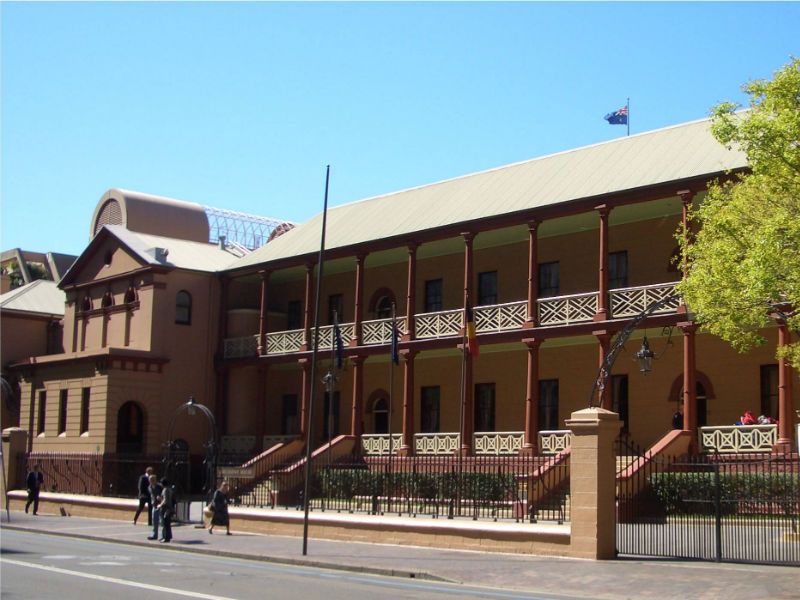Community pharmacies claim price reducations will put primary health services at risk.
Kieran Gair
The voices of 1.2 million Australians were heard in Canberra last month as the largest petition in the nation’s history was tabled in the House of Representatives, expressing public anger over the government’s decision to acclerate price cuts on a range of PBS-listed drugs.
Price cuts had initially been factored in to happen over a course of five years, however, a pre-election change to the Pharmaceutical Benefits Scheme (PBS) by the former Labor government will mean the price cuts will start in April of this year, leaving pharmacies with less time to adjust.
National President of the Pharmacy Guild, George Tambassis believes the government’s decision will lead to cuts to services such as bowel screening, aged care, home delievery and mother and infant services.
“We have some absolutely fantastic and dedicated pharmacists and pharmacy staff out there delievering quality medicine advice, primary health care services and important clinical interventions that deliever better health outcomes for patients and savings for taxpayers,” Tambassis says.
“We have to ensure this work can continue for the benefit of all Australians including the more than a million who signed our petition.”
The Gillard government’s August 2013 Economic Statement announced changes to the PBS would amount to budget savings of $835 million over four years. However, the pharmacy guild launched its petition, ‘Pharmacy Under Threat’ soon after, claiming primary health care services like wound care management and blood pressure monitoring would be threatened.
However, despite the 1.2 million signatures delievered last month to Parliament, a spokesperson for the Minister for Health, Peter Dutton, says the fiscal situation left by Labor has forced the Abbott government to accept price changes to the PBS.
“Due to the fiscal situation left by Labor – budget deficits totalling $123 billion across the forward estimates and debt heading to $667 billion – the Coalition was left with no choice but to accept these savings,” according to the spokesperson.
“They were factored into the forward estimates and not to accept them would force the Coalition to find similar savings from other programs.”
However, Minister Dutton’s spokesperson acknowledged the changes to the PBS will make medicines more affordable for consumers.
“The process of price disclosure means medicines become cheaper for consumers,” he said.
While the price reductions for prescription medications for April 2014 have been publicly released online, the pharmacy guild is campaigning against the move, saying if pharmacies are to sustain their businesses and keep employees they need more time to adjust.
The Pharmacy Guild of Australia estimated pharmacies would on average lose $88,000 in 2014 and 2015 through lost mark-up and trading terms. However, by April 1 the government will reduce the prices of more than 100 medications, some by up to 40 per cent.
Following the launch of the ‘Pharmacy Under Threat’ petition last year, former Labor Health Minister, Tanya Plibersek, says that as drugs come off patents, paving the way for cheaper generic versions to enter the market, the government should reduce the price consumers pay for medication.
“If the cost of medicines for pharmacists is dropping, then it makes sens that the price the government pays for these medicines should drop too – that’s fair, and it’s what taxpayers expect,” Plibersek says.
Pharmacist in charge at Wahroonga Village Pharmacy, Tom Corte, says while he does support cheaper prescription medicines, the changes needed to be done in a sustainable way or small pharmacies in particular would need to cut free services.
“Speeding up price reforms is unsustainable for pharmacies. Our ability to offer services like blood pressure monitoring, diabetic consultations, webster packing on a daily basis and our capacity to stay open seven days a week will be compromised,” Corte says.
However, the price changes will significantly reduce the cost of some medications used to treat common illnesses like high blood pressure, despression and anxiety.
High blood pressure is the leading cause of coronary heart disease and heart failure in Australia and is currently the most common illness managed by General Practitioners, affecting over 2.1 million Australians and costing the health system over $5 billion per year.
With prices for amlodipine and lercandipine, used to lower high blood pressure, set to drop by as much as 30 per cent and the price of simvastatin, the most commonly prescribed drug in Australia, to be reduced by nearly 40 per cent, Director of Commuications at the Consumers’ Health Forum, Mark Metherell, believes patients health interests needs to come before profits.
“We’re supportive of pharmacies, but the previous arrangement wasn’t transparent enough. Drugs came off patents and drug companies were able to offer deep discounts to pharmacies for generic medicines and the PBS covered all of this,” Metherll says.
“Large amounts of public money go into the PBS and pharmacy owners want to maintain their high revenue, but the taxpayer should not be underwriting pharmacists’ profits.”
The petition calls on federal Parliament to take whatever action is needed to ensure community pharmacies receieve the support they need to stay in business, provide patient care, employ staff and remain open after hours.
The government’s steep price reductions on generic branded medicines start this month and negotiations with the Pharmacy Guild of Australia will continue into next year.












